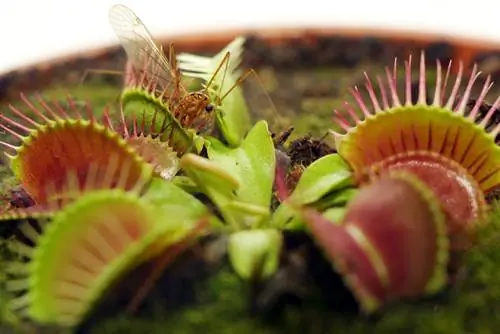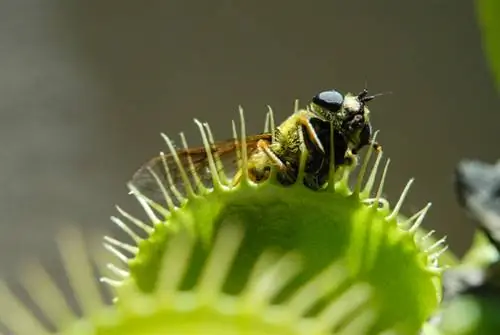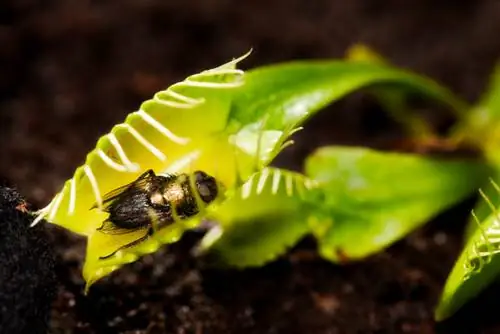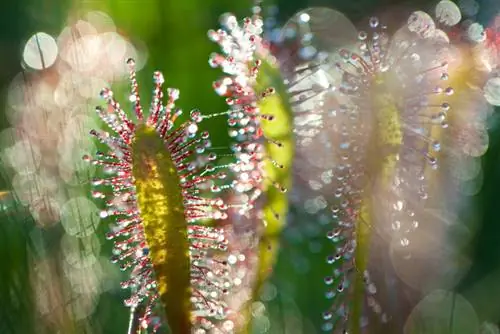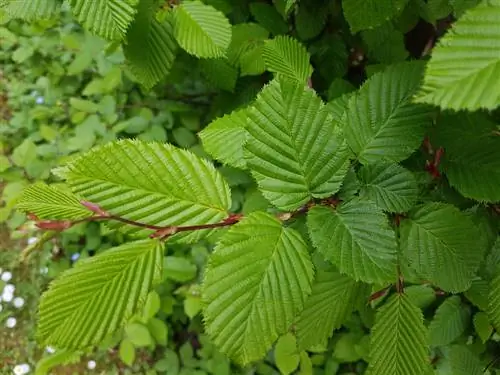- Author admin [email protected].
- Public 2023-12-16 16:46.
- Last modified 2025-01-23 11:20.
Carnivorous plants (carnivores) include all species that get their nutrients not only from the plant substrate, but also from traps. They lure insects into these traps, which they then digest to release nutrients. There are several representative species that are mainly grown as houseplants in our latitudes.
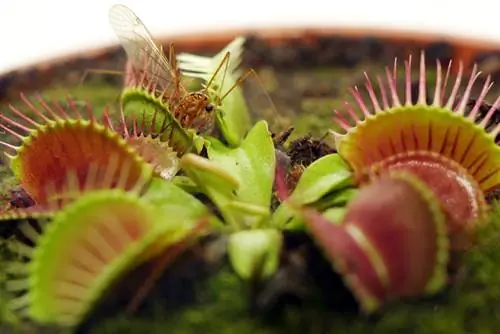
Which species are representative of carnivorous plants?
Representative species of carnivorous plants are: butterwort (Pinguicula), pitcher plant (Nepenthes), sundew (Drosera), pitcher plant (Sarracenia) and Venus flytrap (Dionaea muscipula). These plants attract insects into their different types of traps to digest them and obtain nutrients.
Representative species of carnivorous plants
- Fedwort (Pinguicula)
- Pitcher Plant (Nepenthes)
- Sundew (Drosera)
- Pitch Plant (Sarracenia)
- Venus flytrap (Dionaea muscipula)
The safety gears of the representative species
The most important types of carnivorous plants differ not only in appearance and size. The type of trap they trap is also very different. There are five different trap types:
- Sticky traps (sundew, butterwort)
- Slap traps (Venus flytrap)
- Suction traps (water hoses)
- Pratfall traps (pitcher plants, pitcher plants)
- Fish traps (various pitcher plants)
Caring for carnivorous plant species in the house
All carnivorous plants that you grow indoors as ornamental plants or to kill insects have certain requirements in terms of location and care. In some cases, the care requires a certain amount of prior knowledge so that the plants thrive.
The easiest to grow is butterwort. It is particularly suitable for plant lovers who want to get into the hobby of carnivore breeding.
All other representative species of carnivorous plants prefer special locations where it is moist and have higher temperatures. These varieties are not suitable for the normal flower window.
Carnivorous plants need special soil
You should not grow carnivorous plants in normal garden soil or potting soil. These soils contain far too many nutrients and compact very quickly.
There is special carnivore soil to buy for carnivores. It is characterized by the fact that it is not very nutritious, but very loose. Orchid soil can also be used as a replacement if it is only lightly fertilized.
Experts make their own planting substrate for carnivores. The main ingredient is peat (white peat), which is mixed with quartz sand, expanded clay, peat moss and even polystyrene balls.
Water carnivorous plants properly
The planting substrate of carnivorous plants must never dry out completely. Most representative species can only tolerate waterlogging for a short time. It is always advisable to create drainage in the pot.
The pots with the carnivore species are placed in saucers. The irrigation water is poured into this so that a water level of one to two centimeters is reached. This casting technique is called the accumulation process.
If the water has been absorbed into the substrate, wait two days and then add new water. All representative species do not like being watered from above.
Never water carnivorous plants with tap water
Carnivorous plants cannot tolerate calcareous tap water. Always use rainwater. If there is no rainwater, water with still mineral water.
Tip
You don't need to feed carnivorous plants additional insects. Additional food is unnecessary and even harmful. If you feed, then only one prey item at a time, and only live insects.

